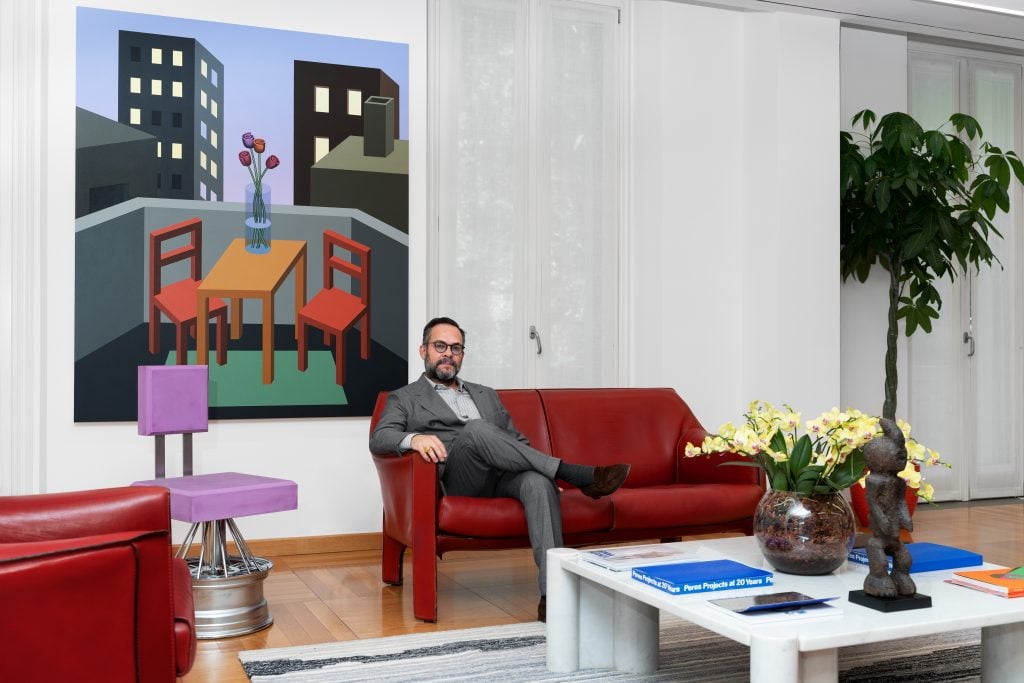For better or worse, the 2000s were a memorable decade for Javier Peres, the former lawyer who founded the gallery Peres Projects in 2002. Known by now primarily as a Berlin gallerist, with locations in Milan and Seoul, he actually launched in San Francisco before moving to Berlin in 2005, with a Los Angeles stopover in-between that is now the stuff of legend.
After less than a year in San Francisco, Peres realized that the city’s blue-chip collectors had little interest in his program—not in the carnivalesque collective performance of assume vivid astro focus (avaf), nor the sexually explicit filmmaking of Bruce LaBruce. He relocated to L.A. in 2003.
Back then, L.A. galleries like Regen Projects and Blum & Poe were on the West Side, where the majority of wealthy collectors lived. But Peres moved to scrappier points east, where a storied contingent of artist-run spaces had developed in Chinatown on Chung King Road. There was Black Dragon Society, an early exhibitor of Jonas Wood’s that operated out of a former Kung Fu studio, and the more conceptually-oriented China Art Objects, where artists like Pae White and Jonathan Horowitz would show. Just off the main drag, then-emerging artist Joel Mesler ran a publishing shop called Pruess Press in the same building as enterprising young dealers David Kordansky and current Art Cologne director Daniel Hug.
Peres made himself noticed immediately, inaugurating his L.A. space with an exhibition of Terence Koh’s first-ever physical works: a pair of live birds, 21 stolen images on lavender paper, and 400 kilograms of fine white flour. Known then as the pre-Tumblr online sensation asianpunkboy, Koh’s massive Internet following materialized with enormous footfall at the opening—one could see tracks of white powder footsteps all across Chinatown. Photographer Ryan McGinley played music and the L.A. Times would later say that Peres had brought “an element of rock-star fashionability” to the neighborhood.
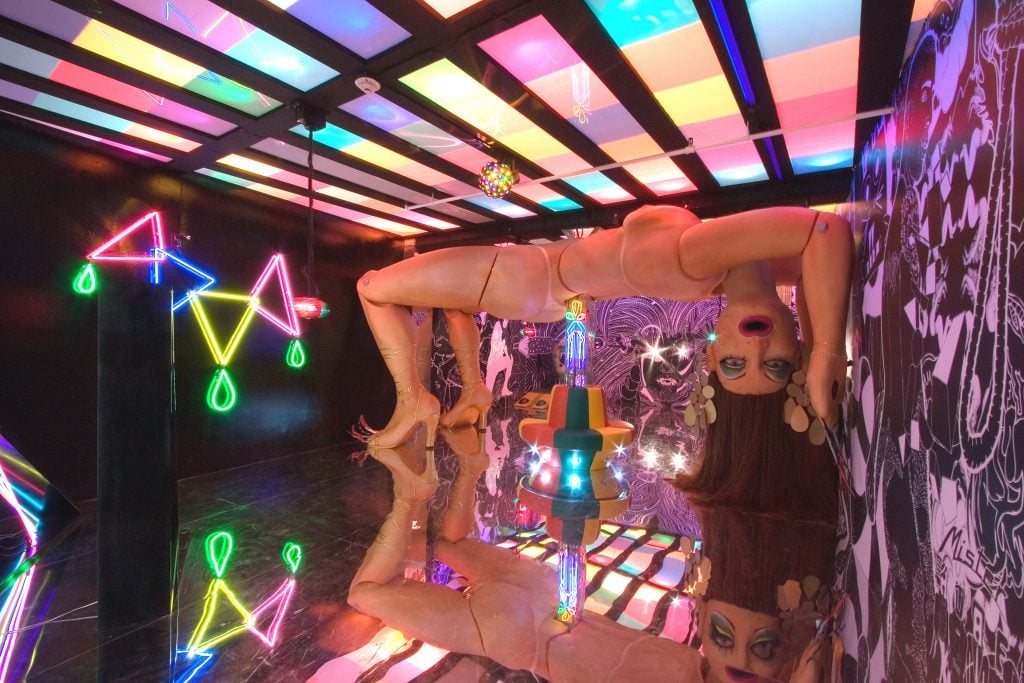
AVAF in “Altered States” at Moca LA in 2005. Photo: Josh White
This was the first of many parties. When Peres opened a Berlin location in 2005, Koh inaugurated the new space there too, and by then the party had grown into a larger, wilder, three-day rave, mirroring the rapid expansion of the gallery. The dealer had already established a stable of stalwart European collectors like Dakis Joannou, Charles Saatchi, and Hans Rasmus Astrup, which paved the way for his artists’ meteoric rise, and he wanted to be closer to his collectors and a wider audience.
A year after opening Peres Projects, three artists he had represented or shown—avaf, Banks Violette, and Koh—appeared in the Whitney Biennial (avaf also appeared in MOCA L.A.’s “Altered States”—read about the show here in our round-up of exhibitions that defined the Y2K era). Other artists, including Dan Colen and Joe Bradley, became market darlings overnight. But this period of sudden abundance quickly spilled over into excess—excessive drug use, excessively expensive studios, and rampant flipping. A 2006 Colen painting, Boo Fuck’n Hoo, that Peres had sold for under $20,000 would auction at Christie’s for more than $3 million in 2014. Meanwhile, the specter of addiction eventually took its toll on the gallery when, in 2009, rostered artist Dash Snow succumbed to overdose. His death led several of the gallery’s artists to sobriety, and within a few years, Peres also pursued sobriety.
On the heels of the gallery’s 20th anniversary celebration in 2023, Peres recalls those formative years in the 2000s—from rocky beginnings in San Francisco and the halcyon days of L.A. to his Berlin chapter—and what he might have done differently.
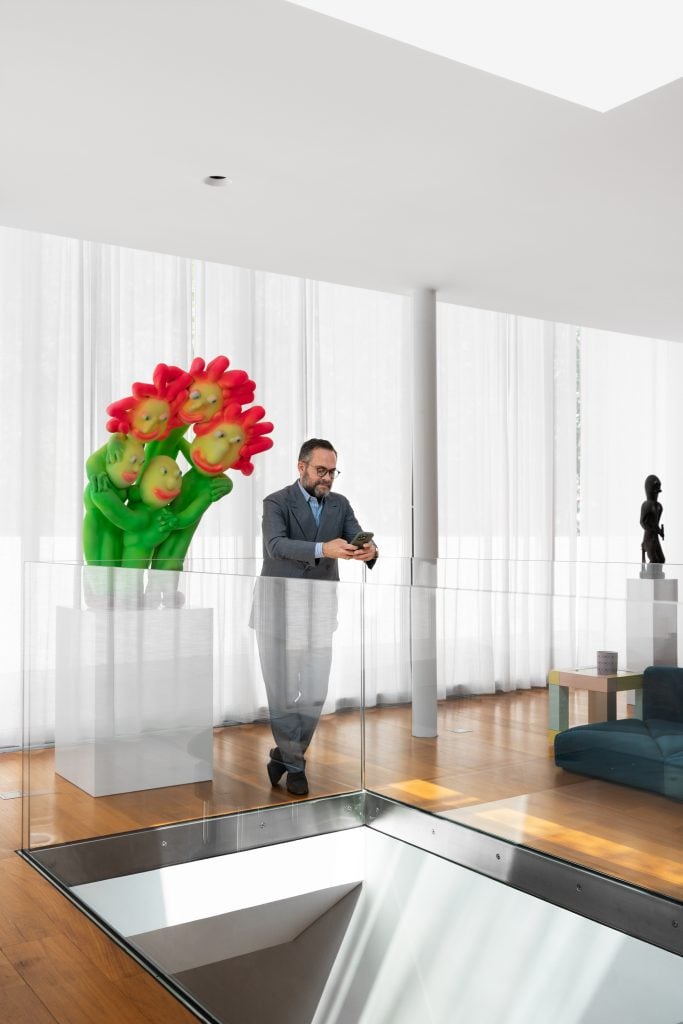
Photo: T-Space Studio
So, you started in San Francisco, a town of serious, but let’s say traditional collectors. How did that go?
I loved living in San Francisco, but when I started the gallery, it was brutal. I knew a lot of these big collectors who would only ever buy works in Europe and New York. The curators at SFMOMA would tell me what I was doing was “really interesting,” but then they’d say, “You know you’re in San Francisco, right?” I moved to L.A. in May 2003, a little after I did Scope Art Fair at the end of 2002. That’s around the time when I met Giovanni Intra, one of the founders of an important L.A. gallery called China Art Objects. He called me an idiot for showing Bruce LaBruce and assume vivid astro focus in San Francisco.
Did it seem like the right decision right away?
It was like night and day. After opening in L.A., immediately I had a sense that there was more of a community around art, not just with local artists but with collectors abroad. I remember Sadie Coles and Stuart Shave from London and neugerriemschneider from Germany—they were all coming around to L.A.. In San Francisco, that just wasn’t happening. Nobody knew what I was doing, but in L.A. it didn’t really matter. I opened in May 2003, and the following March, I had three artists in the Whitney Biennial.
It’s funny how every decade there’s a new wave of people “discovering” L.A. that ultimately washes back into the sea. What was happening here in the early 2000s?
When I think about it now, the whole scene was so tiny. This big collector, Rosette Delug, wrote me a $10,000 check for a work, and I remember thinking how that was so crazy.
Our first opening, with Terence Koh, was insane. Hundreds, if not a thousand people came. He had a bit of a cult following with his Asian Punk Boy website, which was a precursor to Instagram and social media. This was his first solo show and the first time he actually made physical artworks. Ryan McGinley, who was about to have a solo show at the Whitney, came and DJ’d. Other dealers in the neighborhood were confused, saying like “Wait, you’re opening the gallery with just a party?” The ground floor was empty and all the art was in the basement. One of the works was about 400 kilos of white powder—basically like a fine tapioca. There was a wildness to it; or I thought it was wild, but I was actually addicted to drugs. In those early years, my whole situation hadn’t evolved into what it became later.
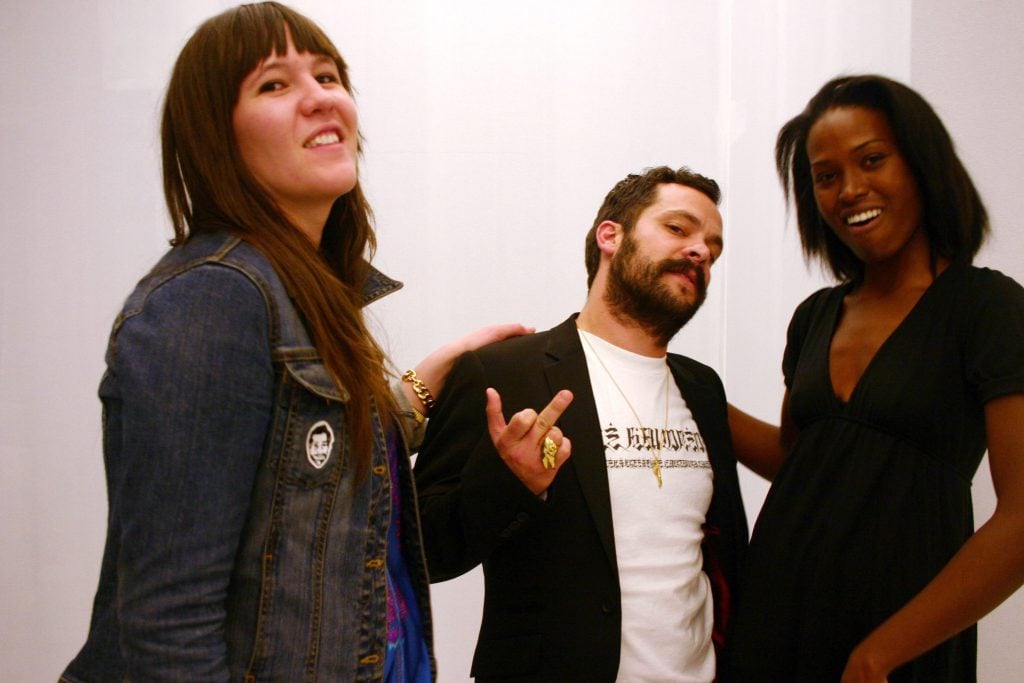
Kathy Grayson of Deitch Projects, Javier Peres of Peres Projects, Nicola Vassel of Deitch Projects in 2006. (Photo by Hikari Yokoyama/WireImage)
Are you saying that your addiction was more manageable at the time?
Yeah—I mean. Yes. I’ve been sober for 11 years, but for the first nine or 10 years of the gallery, it really escalated. In 2009, Dash Snow, one of the artists that I worked with, overdosed and died. After Dash’s death, artists like Dan Colen went to rehab right away and got sober, but I kept going until my business partner, Nick Koenigsknecht, who was then my assistant at the gallery, took me to rehab in Minnesota.
Looking back, I associate that moment with a kind of legendary excess, like Rob Pruitt’s 1998 Cocaine Buffet. I think of that era as a magical, but also chaotic, unsustainable time.
Yeah, I was a hot mess. But I still had this very professional side. I kept regular business hours, and I sold art via email when people were still making transparencies.
I don’t even know what that is. Is that something you shine a light through?
It’s literally a photograph that you take on a plastic film and then put in a little square, and then you shine the light through it. From the very beginning, I kept a digital archive, and big gallerists who were like, “Wait, you’re not keeping transparencies?” I was like, no fucking way. We’re taking digital photos and that’s it.
What was early Art Basel Miami Beach like? You were there in 2004—the third edition, right?
Yeah. I got into Basel pretty early on. In 2004, I did the [shipping] containers, and I did Statements in 2006 in Basel with Terence.
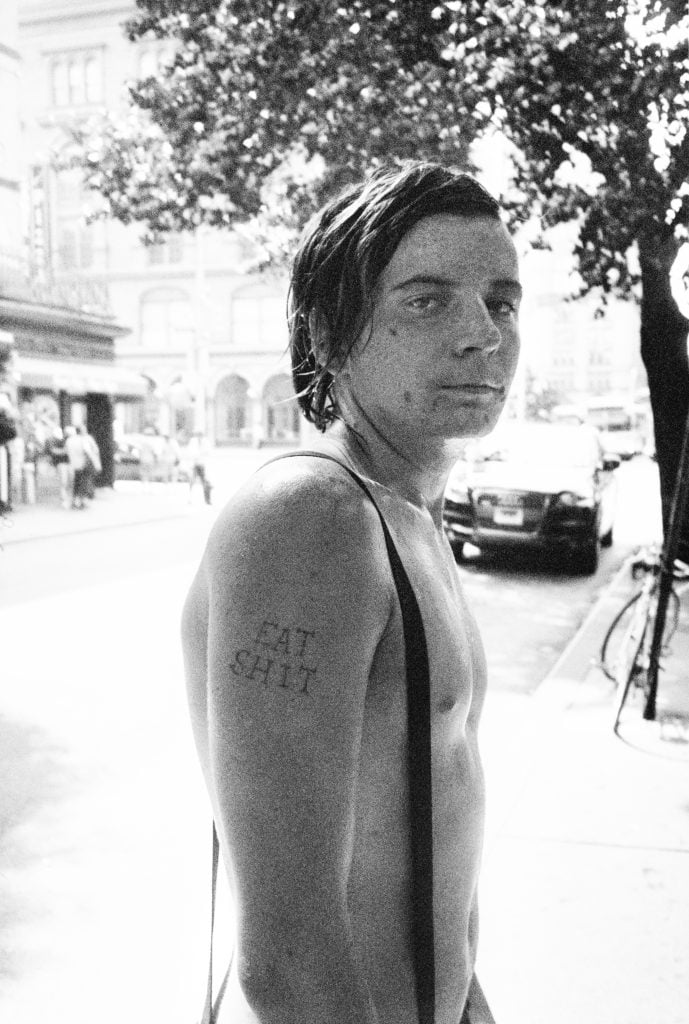
Dash Snow Untitled (2008). Courtesy Peres Projects.
What was the vibe when Miami was still new?
Gosh, for me, it was super-defining from the very beginning. Even when I did that fair in the hotel room in 2002 [Scope], I sold everything I was selling. I was selling artworks just from images on my computer. And by 2004, Miami was really already solidified as the important U.S. art fair. In fact, I think this year, the only American fair we’ll do is Miami. It just makes the most sense for us. The trajectory of Miami, also because I’m Latin American, helped us in the rise of the Latin American collectors at that time—plus all of the East Coast people in the U.S. that would come. At the very beginning it hadn’t gotten so party-oriented and branded; stuff was happening and people appreciated it, but it wasn’t totally out of control. Nowadays, there are all these people from reality shows, and you wonder, ‘Why is this person here?’
Asia hadn’t fully happened in the art business yet; there were very few Asian collectors at that time. The Latin American collectors also were much more limited and a bit more quiet. They weren’t they weren’t flexing like they do now. Of course, you had Margulies, Rosa and Carlos de la Cruz, the Rubells. Those guys were a major catalyst for that whole thing. I think a lot of people saw that and they were like, “Oh, wait, we want to be like that—so you can you can just collect art and make it an integral part of your life?”
Since we’re talking about all this nostalgic stuff, I’ve collected art since I was 13 years old. I’ve always lived with art. I had Basquiat drawings in my dorm room in college, and when my friends were like, what is that? I was like I’m gonna pay for my law school with those drawings.
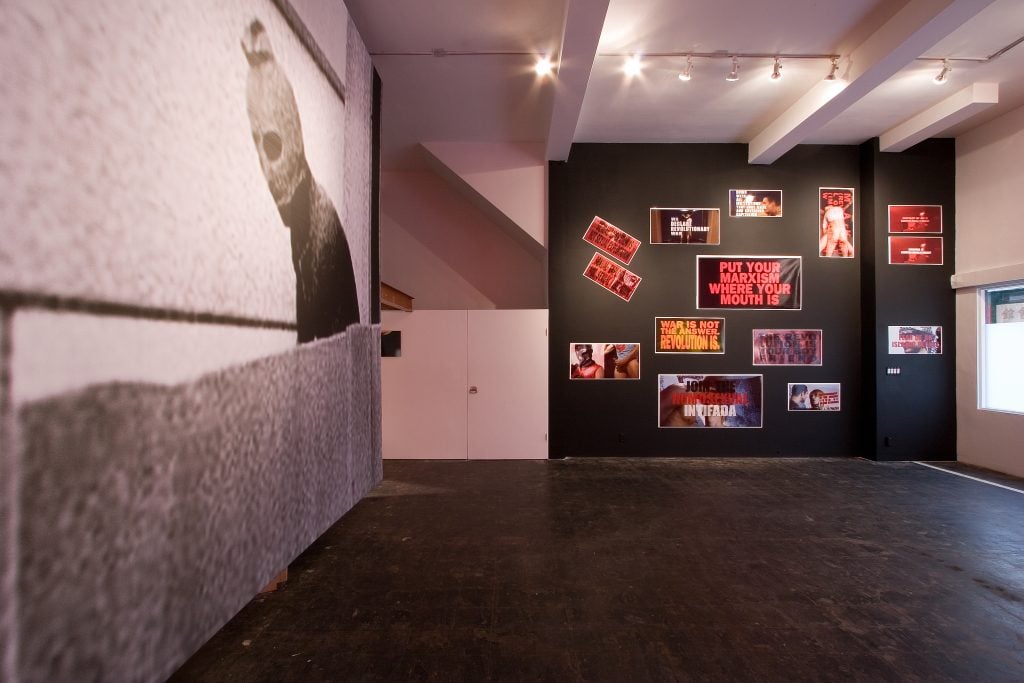
Bruce LaBruce “Heterosexuality is the opiate of the masses.” Installation View (July 16–August 13, 2005) Peres Projects, Los Angeles
I know that buying art speculatively to flip for a profit has always existed, but was it as prevalent then as it is now?
In the early 2000s, gosh, we used to sell works for less than $5,000, then around 2005 and 2006, before everything crashed in 2008, there was a rise of people who were buying things just to sell. For our artists—Terence Koh, Dan Colen, Dash Snow, Joe Bradley—it happened quite quickly.
How were you managing such an explosive shift?
I managed it in a couple of different ways. I also monetized it. I owned a lot of these works. I would buy five or 10 works at a time and fill my two Berlin living rooms with Joe Bradley works, then rehang it with Dan Colen works, or Terence Koh works. When prices went up, we were able to sell them to better collections. I was definitely capitalizing on it, and I was also helping the artists capitalize on it. I had this belief that they should make money from their work while they’re living. We started realizing that we needed to be more careful about who we sell to.
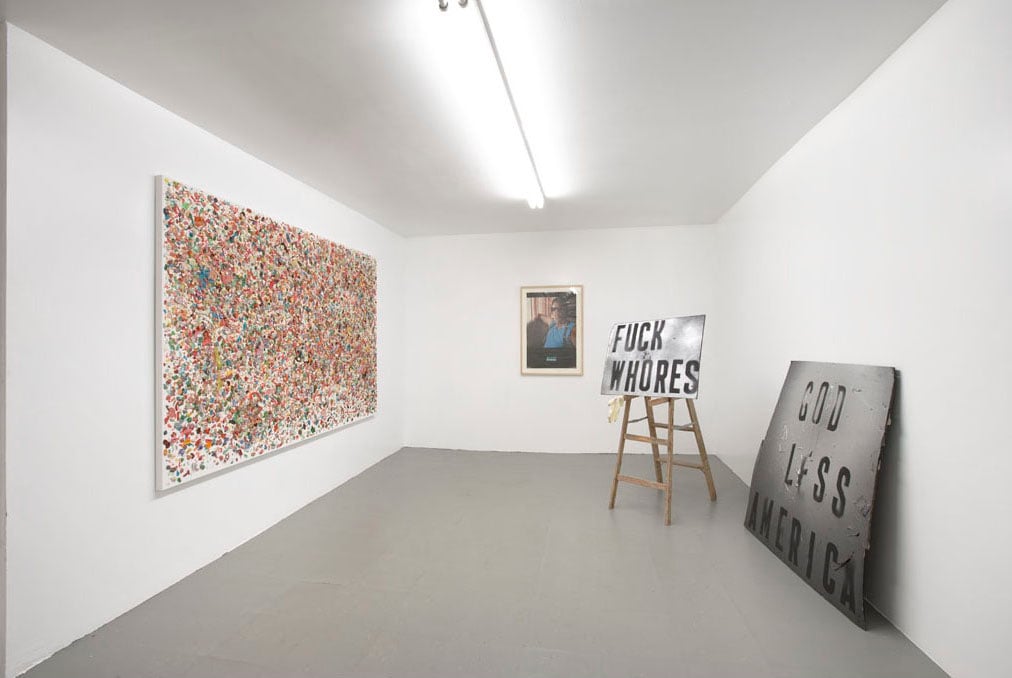
Dan Colen “Sack of Bones” (2008). Asia Song Society. Installation view. Courtesy Peres Proiects.
How were your artists handling it? Did you watch a lot of lives change?
Back then, unfortunately, that was the biggest problem. We all became our own saboteurs. With the exception of Dash, who came from crazy wealth, this was a group of young artists who could suddenly do what they wanted for the first time. They were all in their 20s; Terence wasn’t really homeless, but I remember he was living off of rice and eggs. Dan was sharing an apartment. Then, I remember signing the lease for some of their new studios in New York that were $15,000 a month. It was a lot of money, but it fed the artworks that they were making—these were serious artists with big ambitions. Terence had solo shows at the Whitney, the Zurich Kunsthalle, the Vienna Secession. There were things that diverted their attention and my attention, but I’ve learned to look at that period with more forgiveness and a bit of grace. There was a bit of darkness during that period.
Definitely. And then by the end of that decade, you left L.A. to focus on Berlin.
We opened in Berlin in 2005. The city already had amazing and important German galleries like Esther Schipper, Galerie Neu, Giti Nourbakhsch. I guess being the first foreigner there gave me a bit of attention. Our original space in Kreuzberg was 10,000 square feet, which gave us the opportunity to mount really ambitious exhibitions without the need to partner with other galleries. The first show there with Terence was super iconic: the only work was a tombstone made of sugar that had the date of his birth and death, and we cut a hole in the roof so it would be destroyed by rain. We opened with a huge rave around the tombstone that started on Friday and ended on Sunday, even though it was cold as hell.
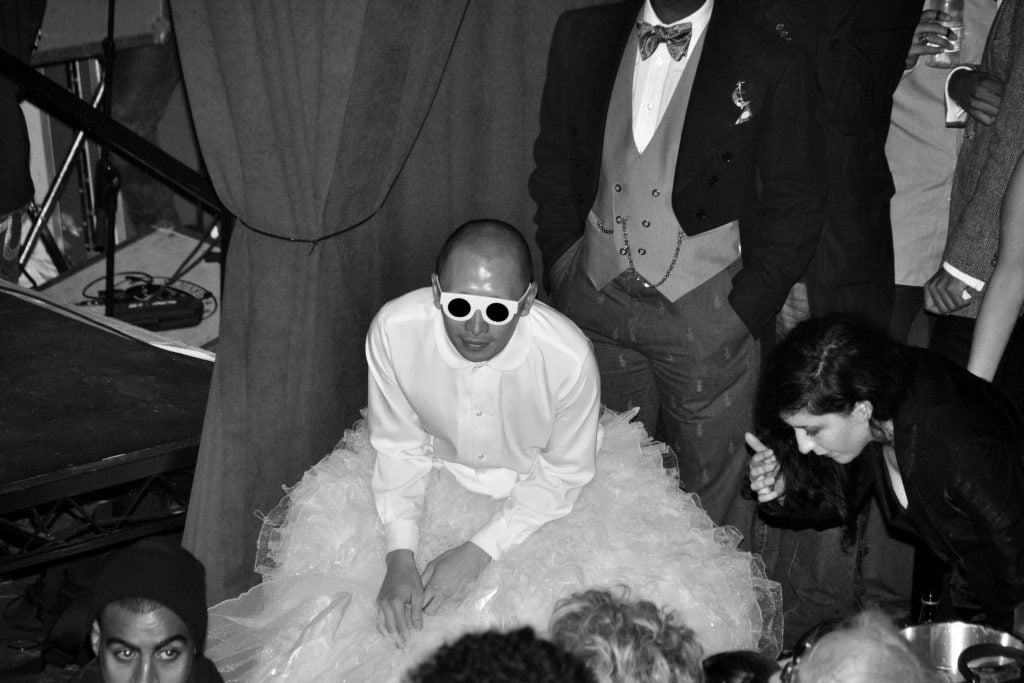
Terence Koh at a PAPER Magazine Annual Nightlife Awards in 2010 in New York City. (Photo by MARIE HAVENS/Patrick McMullan via Getty Images)
How did that change your relationship with L.A.?
In Berlin, we had this massive space and so I barely spent any time in L.A. after 2005. I didn’t realize that Chung King Road had started to dissolve and everyone was moving to Culver City to be close to Blum & Poe. I moved to Culver City very late, in 2009, and the fit wasn’t great. The atmosphere was more serious, more adult. I closed the gallery a year later, but by then it was normal to sell by PDF. By then, we were shipping all over the world.
Is there anything you miss most about that era?
I remember when I started Berlin, I set an operating budget of $25,000. I told myself that would cover it, and it did—at the very beginning. But then ambition took hold. I had Terence putting a hole through the roof and artists making 20-foot-long paintings. And it all worked out. I also loved having the gallery in Chinatown. Jorge Pardo had a bar called Mountain Bar. After the openings, we would just go and hang out. It was all very light and accessible, even though for those of us who stayed longer into the evenings it became a bit dark always, you know, but that was our own demons more than anything else.
Read Anime, Graffiti, and a Pickled Shark: Here Are 7 Exhibitions That Defined the Y2K Era
